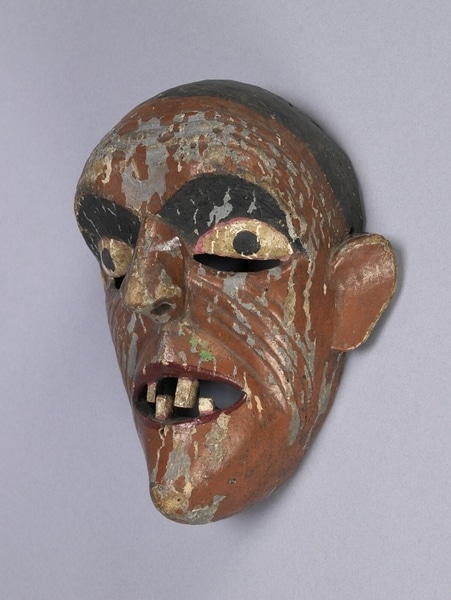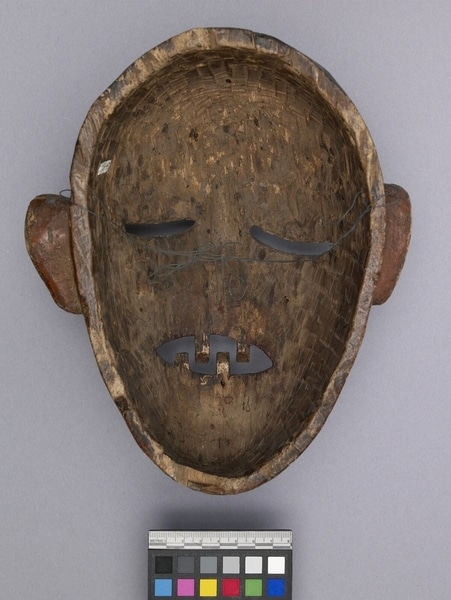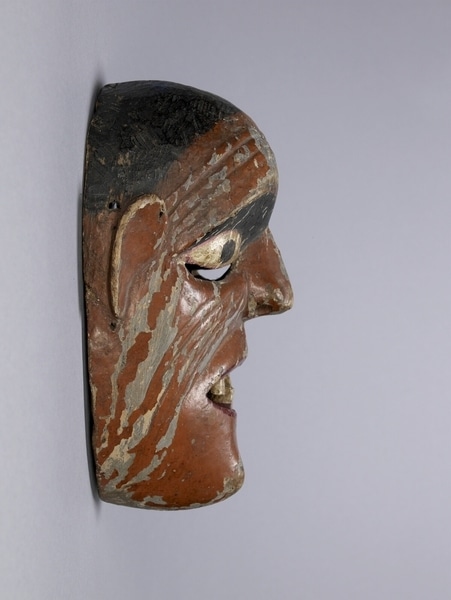Mask Item Number: Eh45 from the MOA: University of British Columbia




Description
Mask with humanoid face, ovoid shaped, with black hair and sunken eye sockets, grey-white eyeballs with crescent-shaped openings under each eye, an open mouth with thin red lips and four large grey-white teeth (two top, and two bottom), a pointed chin, protruding ears, and a small pointed nose. The face and ears are painted orange-brown. Incised grooves in the cheeks and ridges on the forehead indicate wrinkles. Wire is strung between large holes behind the ears.
History Of Use
The Kolam is a secular entertainment with considerable elements of social satire. It incorporates narrative, mime, dance, and music. A Kolam performance usually has four episodes the precise content of which may vary. These consist of a prelude, detailing the origin of the drama; the arrival of a royal party and dances by characters mythical, human and animal; enactment of a popular story or stories; and a purifying demon dance. This character is Nonci, an old village wife, married to Panikkala, the old village husband. Nonci is said to still harbour lustful thoughts about men. She and her husband dance in a comical scene which is a prelude to a following unrelated performance. These two characters take part in various comical situations.
Iconographic Meaning
Wrinkled skin, sunken cheeks, deep set dark eyes, missing teeth and sagging chin are all meant to symbolize very old age
Cultural Context
exorcism
Item History
- Made in Sri Lanka before 1978
- Collected during 1978
- Owned by Jason Schoonover before February 10, 1981
- Received from Museum of Anthropology Shop Volunteers (Funding source) and Jason Schoonover (Seller) on February 10, 1981
What
Who
- Culture
- Sinhalese
- Previous Owner
- Jason Schoonover
- Received from
- Museum of Anthropology Shop Volunteers (Funding source) and Jason Schoonover (Seller)
Where
- Holding Institution
- MOA: University of British Columbia
- Made in
- Sri Lanka
When
- Creation Date
- before 1978
- Collection Date
- during 1978
- Ownership Date
- before February 10, 1981
- Acquisition Date
- on February 10, 1981
Other
- Condition
- poor
- Accession Number
- 0704/0044